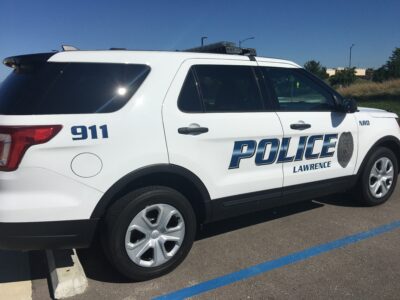‘C.S.I. Lawrence’ difficult work
Crime-scene specialists say TV show bears little resemblance to their jobs
Evidence, Lawrence Police Detective Dan Ward says, usually is something that falls to the ground.
But something doesn’t fall to the ground in every case, he says. And there’s not always a palm print, fingerprint or DNA evidence. And if detectives don’t find the evidence, there’s something wrong, right?
Wrong, Ward says.
He faults the popular TV show “C.S.I.: Crime Scene Investigation” for making detective work look too easy, for making people think evidence always falls into a tidy trail that leads directly to the suspect.
“In real life, you’re lucky if you get one fingerprint, one blood sample,” Ward said. “It’s hard work. It’s very physical, and you get dirty.”
It doesn’t take a long conversation with Ward and Detective Zach Thomas to learn they aren’t big fans of the television drama that’s made their profession famous.
“It’s sensationalized, like anything in the media,” Thomas said the other day as he sat in a conference room at the Lawrence Police Department’s Investigation and Training Center, 4820 W. 15th St. “It makes most people feel like experts.”
Perception problem
Ward and Thomas, the department’s two top crime-scene specialists, have watched “CSI” about 18 times between them.
They might flip it on if they’re not busy filling out paperwork or squatting on the floor of a dingy apartment. They think it’s entertaining to relax while watching someone else comb through shell casings, hairs, blood spatters and soiled washcloths.
But that’s about where their affection for “CSI” ends.

Lawrence Police Detective Dan Ward looks over evidence at the Police Department's Investigation and Training Center lab. He and other investigators use modern equipment to help bring criminals to justice.
They blame the show for creating a public perception problem: the belief that in order for there to be proof of a crime beyond a reasonable doubt, there must be the perfect package of evidence.
“My concern is that the jury base would also have those same sentiments,” Thomas said.
Ward, 39, is a graduate of Lawrence High School who enjoys boating and motorcycle riding in his spare time. In 1999, he wrote an article called “Budget Minded Hair and Fiber Collection” for a regional forensics journal.
Thomas, 35, a former LPD undercover narcotics officer who went by the alias “Ray Gomez,” teaches Sunday school with his wife at First Christian Church and enjoys attending his sons’ sporting events.
Pair of jokers
Both earned bachelor’s degrees in criminal justice from Washburn University, and both like to crack jokes.
“I look for the high evidence. He looks for the low evidence,” Ward said, explaining his approach to teamwork with his slightly shorter colleague.
They liken their job to solving a puzzle with pieces that change from scene to scene. Sometimes, a fingerprint or palm print is the most important piece.
That was the case in the 1996 shooting of Topeka resident Onzie Branch outside a Lawrence night club in the 800 block of West 24th Street.
Just before it started to rain, the detectives found a palm print on a van, Ward said. They used the print to link another Topeka man, Damon McCray, to the scene, and he was later convicted of the shooting.
| The officers of Douglas County Sheriff’s Underwater Search and Recovery Team are part two in the On Duty series. |
“It made the whole case,” Thomas said. If they’d come to it after the rain, it could have been too late, and McCray may not have been implicated.
In other cases, the key piece of the puzzle might be a pattern of blood spatters.
If a drop of blood falls straight to the ground at a 90-degree angle, the spatter has a scalloped edge all around, Ward said. If someone is walking while dripping blood, the scallops will be concentrated on the side facing the direction the person was walking.
“You can tell if it’s cast off an instrument, what direction it came from,” he said. “You can tell if it’s expirated.”

With the use of a filter and dye, detectives can collect DNA samples they see left behind on cloth.
More reality
In the case of a shooting, the investigators try to re-create the angle and distance of the shot. If a burglar uses a screwdriver that leaves a dent on a piece of wood, they might use silicone putty to make casts of marks.
If a case involves a DNA sample, they collect it and send it to the Kansas Bureau of Investigation for testing.
“Everybody you talk to, you have to deal with all these lies,” Ward said. “The evidence doesn’t lie.”
Ward and Thomas spend hours at a time studying gruesome scenes, but they don’t have room to be squeamish.
“Bodies become evidence,” said Ward, who in 1997 attended a seminar on recovering fingerprints from human bodies. “I don’t remember any victims’ names.”
If Thomas and Ward were to make “CSI” factually accurate, they probably would add more paperwork. There also would be more staring at the ground, longer waits for lab results, and more sore leg muscles.
“We’re obviously not allowed to sit down,” Thomas said. “We must do 10,000 squats in a long case.”







